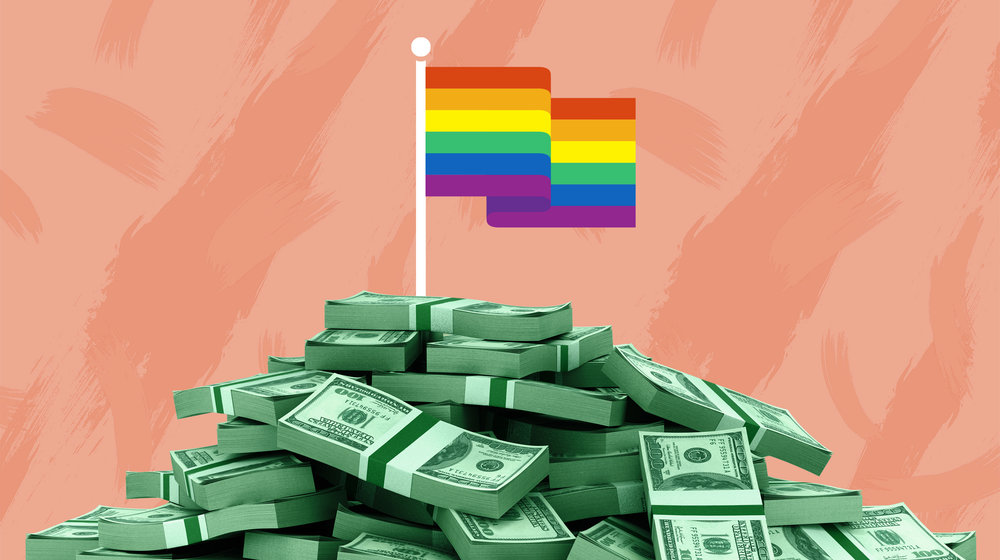David Auten & John Schneider — Queer Money

America is getting older. According to a SAGE (Services & Advocacy for GLBT Elders) study, there are currently 3 million LGBT people in the United States over the age of 55 and 10,000 people—LGBT, straight, or otherwise—will turn 65 years old every day until 2030.
For the aging LGBTQ population, retirement is a very real concern. In Prudential’s 2012 LGBT Financial Experience Study, respondents cited concerns about retirement more than any other financial worry, despite that fact that 78 percent of participants were already saving for retirement. When Prudential ran the study again in 2016, respondents were “less likely to have started saving or investing for retirement … than those surveyed in 2012.”
This isn’t good because, as SAGE found, one in three LGBT people live alone. That means we’re more likely to face our later years by ourselves at a time in our lives when our social circles start to shrink as well. We may not have loving children, spouses, or other relatives to tend to us in our old age either. While no one should count on loved ones to stand in for poor financial planning, many queer Americans will be solely responsible for financing their care in old age. Consequently, we need to be more diligent about saving for retirement and the earlier we start, the better.
From our own experience, when queer people reach out to us, it’s mostly those in their late 40s to mid-50s who fear they haven’t saved enough for retirement and have fewer working years ahead of them than behind them. It’s not necessarily easy, but there are ways to jumpstart retirement planning even when your golden years are on the horizon.
Pay off your debt
In the 2016 Prudential survey, 48 percent of LGBT respondents considered themselves “spenders” compared to 38 percent of the general population. But debt anchors our future to our past, so one of the most important mental shifts to make is to forbid yourself from sacrificing tomorrow for today.
Many retirees today are finding it harder to survive on retirement savings and Social Security because they have too much debt. For example, 30 percent of Americans 65 and older had mortgage debt in 2011. In 2001, only 22 percent of Americans 65 and older had mortgage debt. If you’re young, with a low-interest rate mortgage loan, it may not make sense to pay off your house instead of saving for retirement, but for older queer people without other assets to fall back on, owning your home free and clear by retirement is a worthy goal.
Likewise, the Government Accountability Office reported in 2016 that more than 110,000 Americans 50 years of age and older are having Social Security checks garnished to repay long-held, defaulted student loans. The near-term concern is the dwindling Social Security check. The long-term concern is millions of Americans racking up student loan debt faster than any other generation in history. According to Student Loan Hero, Americans owe over $1.4 trillion in student loan debt, about $37,172 in student loan debt per college graduate in 2016. Prioritizing repaying your student loan debt could help you avoid a nasty surprise when you’re living on a fixed income and counting on Social Security to make ends meet.
Grow your cash flow
Robert Kiyosaki, of Rich Dad/Poor Dad, says wealth is when you have enough investment income to cover your expenses. There are three ways to create and grow investment income.
First, there are paper assets: stocks, bonds, and mutual funds. Second, there are real estate investments, either through physical properties or through REITs—a real estate investment trust that owns a basket of real estate. Then there are personally owned businesses. While this three-step approach can help you build wealth, you don’t have to achieve all three to have a comfortable retirement. Even LGBT people who’ve delayed in preparing for retirement can still achieve financial security through investments in their 401(k), private investments, or even property ownership. The key is to get started. The older you are, the more urgent it is to start now.
Get a financial planner
If you don’t have a financial planner, get one. Prudential’s 2016-2017 study showed that fewer queer people use a financial planner (29 percent) than the general population (39 percent). However, an HSBC study showed that individuals with a financial planner have nearly 29 percent more in retirement income wealth than those without one.
Hiring a financial planner won’t make you rich, but not having a financial plan may cost you thousands over your lifetime. A 2012 CFP (Certified Financial Planners™) Board study showed that “the more extensively households plan, the better prepared they are financially in terms of their likelihood of saving, investing, and managing credit card debt.”
A financial planner will look at your (and your partner’s) financial life in totality to make sure you’re on target to meet your short-term and long-term financial goals. They’ll ensure you have all the financial products you need, such as health insurance, wills, and beneficiaries. They’ll guide you through changing your investments as your needs and circumstances change. So, the fee they’ll charge will likely give you peace of mind, and you can’t put a value on that.
There are valuable resources, like GuideVine and XY Planning to help you find an LGBT financial planner or someone who’s knowledgeable about the unique financial needs of the LGBT community. If the fees associated with financial planners scare you off, you may want to consider an automated robo-adviser or a hybrid adviser, which are much cheaper, but also much less likely to provide personalized portfolios based on conversations, not algorithms.
If you’ve procrastinated on retirement planning, don’t wait any longer. No matter how old you are, starting your financial planning now is always the best strategy.

